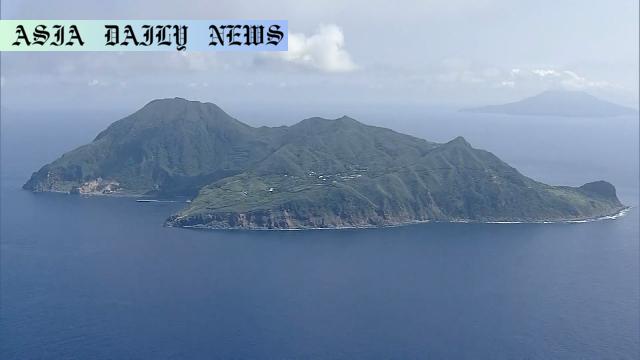Earthquakes – Over 1,600 quakes strike Tokara islands in Japan with intensities reaching up to lower 6, prompting urgent caution.
Over 1,600 earthquakes strike Tokara island chain, Japan.
Tremors intensify around Akusekijima and Kodakarajima islands.
Largest quake recorded with intensity of lower 6 on Japanese scale.
Japan Meteorological Agency advises caution due to ongoing seismic activity.

Massive Seismic Activity in Tokara Island Chain
The Tokara island chain in southwestern Japan has been rocked by an unprecedented surge in seismic activity. Since June 21, the islands of Akusekijima and Kodakarajima have experienced a total of more than 1,600 earthquakes, with recorded intensities of 1 or greater. The Japan Meteorological Agency (JMA) has reported that this marks the most active seismic period for the region to date.
Among these tremors, notable quakes include one with an intensity of lower 6 on the Japanese scale of zero to seven that struck Akusekijima. On Sunday, Akusekijima registered intensity levels of upper 5 on two separate occasions, followed by a magnitude 5.1 earthquake with a lower-5 intensity on Monday. As of early Tuesday morning, the total number of registered tremors stood at 1,663, underscoring the magnitude of the ongoing seismic event.
Comparisons with Earlier Seismic Events
While the Tokara island chain has experienced seismic activity in the past, including notable instances in 2021 and 2023, experts have emphasized that the current series of tremors is significantly more active. The 2023 quakes served as a reference point for studying fault lines in the area, but experts are now investigating the root causes of this recent intensification. The islands lie in a region of complex tectonic interactions, with fault line activity thought to be a central factor in the frequent earthquakes. As the situation unfolds, scientists are closely monitoring the pattern of quakes to assess the likelihood of further, potentially larger, seismic events.
Impact and Warnings
The JMA has urged residents and visitors in the affected areas to remain vigilant. The agency has advised of the potential for quakes with an intensity of up to lower 6, indicating a significant risk of further disruption. Local authorities are continuing to assess the impact of the seismic activity on infrastructure, including roads, buildings, and essential services, while ensuring residents have access to emergency resources.
The psychological toll on communities in earthquake-prone areas cannot be understated. Local population centers in and around Akusekijima are being equipped with resources and support systems to weather the ongoing activity. Disaster response teams are on high alert and are coordinating with JMA to ensure timely warnings and evacuations if necessary. Although damage thus far appears to be minimal compared to the frequency of the quakes, there is growing concern that the next tremor could bring significant consequences if preparedness is not maintained at high levels.
Global Seismic Implications
The current situation in the Tokara island chain has drawn international attention, with seismologists around the world observing how this series of events unfolds. The tremors offer new insights into the behavior of fault lines in the region, helping researchers refine predictive models for earthquake-prone zones globally. Larger quakes in isolated zones like Tokara often serve as case studies for understanding plate tectonics and their broader implications.
Many experts are urging governments in other seismically active regions to review their disaster preparedness strategies in light of the Tokara quakes. Unforeseen seismic surges highlight the need for robust early warning systems and community education programs. Cooperation between scientific and emergency response communities will be critical in mitigating risks from future events.
As monitoring continues, the focus remains on the safety, preparedness, and resilience of the Tokara region. This seismic activity serves as a stark reminder of the omnipresent power of nature and the need for constant vigilance in regions vulnerable to earthquakes.
Commentary
Intensity of Seismic Activity in Tokara
The recent surge in earthquakes in the Tokara island chain is a compelling reminder of the volatile tectonic activity characteristic of Japan. With more than 1,600 quakes recorded in such a short period, the situation has captured the attention of scientists, policy makers, and residents alike. What is particularly striking about this event is not only its scale but also the intensity of certain tremors, one of which reached a lower 6 on the Japanese intensity scale. This marks one of the most active periods the region has ever recorded, highlighting the pressing need for thorough studies into the underlying causes and preparation strategies.
Preparedness Amid Uncertainty
Seismic events might feel common in a country like Japan, but such sustained activity challenges even the most resilient infrastructures and communities. Ensuring the safety of the local population remains paramount, and it is heartening to see the Japan Meteorological Agency urging caution and readiness in the event of stronger quakes. However, this incident underlines the need for continuous upgrades in early warning technologies, particularly in areas where tectonic plates interact in unpredictable ways. It is also crucial for residents in these regions to stay informed and maintain access to emergency resources.
Lessons for the Global Community
Globally, the Tokara quakes serve as a wake-up call for leaders and policymakers in other earthquake-prone areas. The key takeaway is the unpredictable nature of seismic activity and the necessity of ongoing investments in scientific research and disaster mitigation. Communities around the world must not only learn from Japan’s meticulous response system but also adapt it to meet their unique geographical challenges. The Tokara quakes are a sobering reminder of our reliance on the Earth’s stability and the critical importance of being prepared for the unpredictable forces of nature.


